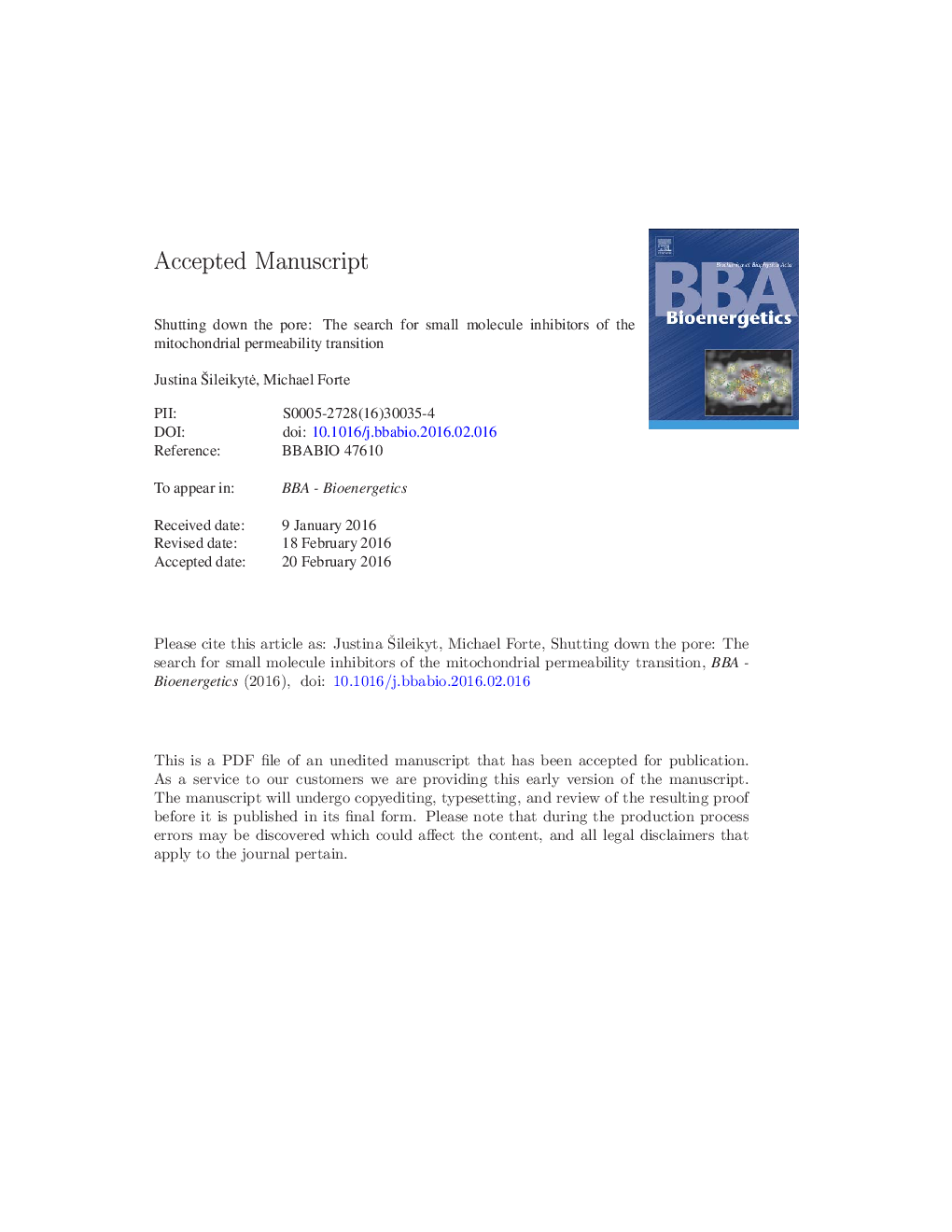| Article ID | Journal | Published Year | Pages | File Type |
|---|---|---|---|---|
| 10795284 | Biochimica et Biophysica Acta (BBA) - Bioenergetics | 2016 | 21 Pages |
Abstract
The mitochondrial permeability transition pore (PTP) is now recognized as playing a key role in a wide variety of human diseases whose common pathology may be based in mitochondrial dysfunction. Recently, PTP assays have been adapted to high-throughput screening approaches to identify small molecules specifically inhibiting the PTP. Following extensive secondary chemistry, the most potent inhibitors of the PTP described to date have been developed. This review will provide an overview of each of these screening efforts, use of resulting compounds in animal models of PTP-based diseases, and problems that will require further study. This article is part of a Special Issue entitled 'EBEC 2016: 19th European Bioenergetics Conference, Riva del Garda, Italy, July 2-6, 2016', edited by Prof. Paolo Bernardi.
Keywords
SARFoF1 ATP synthaseBenzamideOMMRh123CypDCyclophilin DCypACyclophilin ABN-PAGEPTPHTSPermeability transition poreblue-native polyacrylamide gel electrophoresisPermeability transitionimmCSAIsoxazoleHigh-throughputinner mitochondrial membraneRhodamine 123cyclosporin Acalcium retention capacityScreeninghigh-throughput screeningouter mitochondrial membraneInhibitorsMitochondriaCRC
Related Topics
Life Sciences
Agricultural and Biological Sciences
Plant Science
Authors
Justina Å ileikytÄ, Michael Forte,
